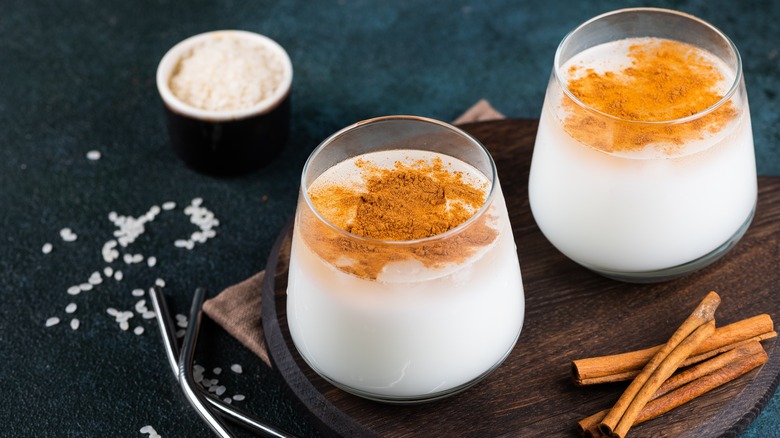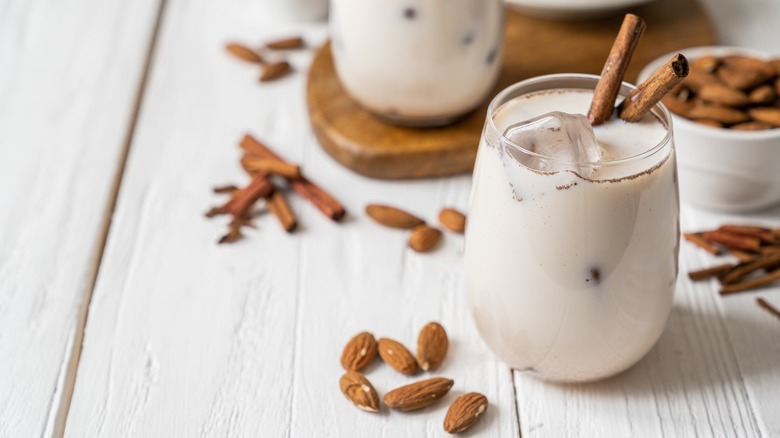Strain The Rice For Perfectly Smooth Horchata Every Time
Mexican horchata makes for the perfect sweet and creamy complement to a spicy plate of tacos, enchiladas, or nachos. Despite its decadently creamy texture and rich flavor, authentic Mexican horchata is a plant-based recipe that relies on the starches in rice to create its characteristic flavor and texture. An overnight soak draws all of the starches out of the rice, while blending the liquid with the rice creates a thick, hearty texture.
While most recipes require you to strain the liquid from the blended bits of rice, improper straining can cause a gritty or chalky consistency. To avoid an unpleasant texture, you can strain the whole rice grains after you've soaked them instead of blending them into the soaking liquid. The soaking liquid will have effectively leeched all of the starches from the rice to supply the velvety texture and rich nutty flavor you seek.
Plus, removing the rice as a full grain requires just one quick run through a standard mesh sieve, making it much easier than multiple rounds of straining tiny bits of blended rice. Even after straining blended rice and water multiple times through cheesecloth, you still run the risk of gritty or gummy sediment. Removing the grains whole is the simplest way to avoid the risk altogether for silky smooth sips every time.
Horchata ingredient variations to bolster texture and flavor
Rice, sugar, and cinnamon are the fundamental ingredients in horchata, making the quality of your ingredients and adherence to instructions all the more important. Long-grain white rice is the most widely used type of rice in Mexico and the best option for horchata. Furthermore, since you aren't blending the rice up with the soaking liquid, you cannot skimp on the soaking time. An overnight soak is crucial to reap the texture and flavor benefits of rice.
If you find that the consistency or taste of your horchata is lacking, there are various ingredient additions to compensate, many of which are common around Mexico. For example, sweetened condensed milk, evaporated milk, and heavy cream are popular add-ins that complement the spicy cinnamon and the nuttiness of rice while also enhancing the thickness, sweetness, and depth of Horchata with dairy. If you're looking for plant-based options, you can add almonds, cashews, or sesame seeds to the rice, water, and cinnamon mixture. These nuts are buttery, rich dairy alternatives that will likewise enhance your horchata's nuttiness while adding textural depth.
In Spain, horchata is elaborated with tiger nuts, which are often swapped for melon seeds in Mexico. In Mexico's tropical regions, horchata de coco is a common variation that blends coconut water and pulp into the foundational rice, sweetener, and cinnamon mixture. If whole coconuts aren't available, you can substitute them for full-fat coconut milk or coconut cream for added sweetness.

